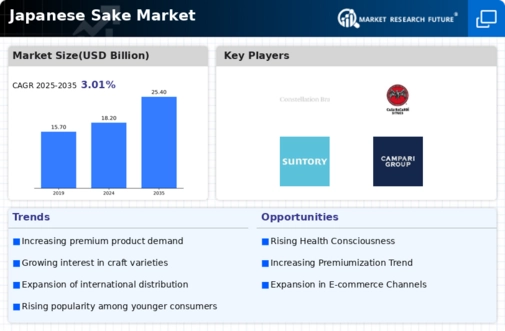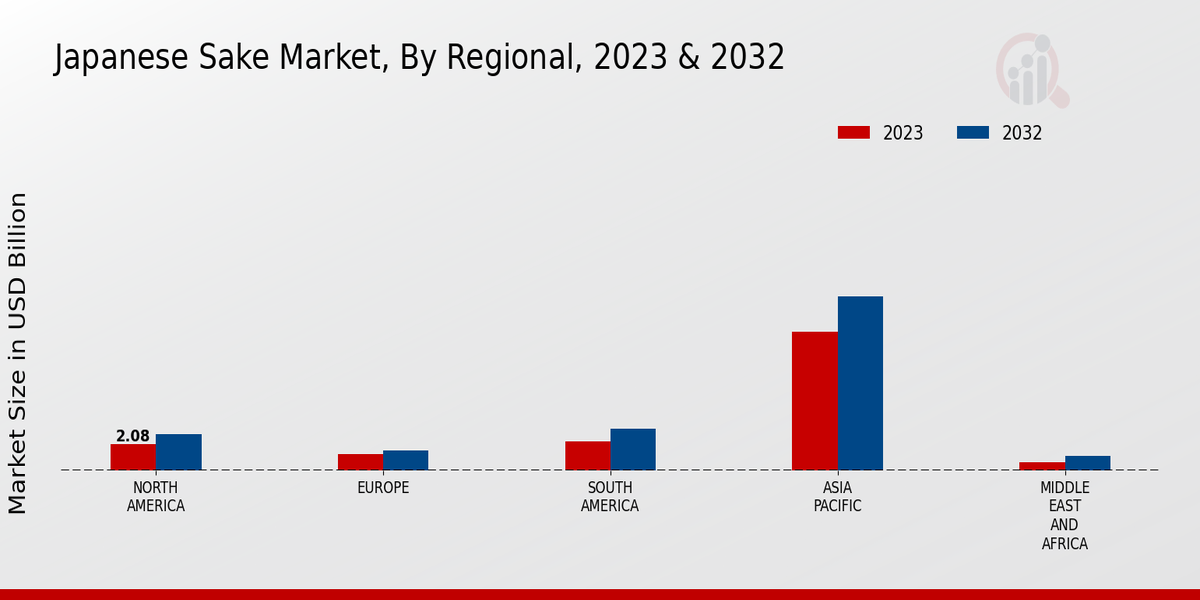Market Growth Projections
Cultural Events and Sake Festivals
The Global Japanese Sake Market Industry is significantly influenced by cultural events and sake festivals that promote awareness and appreciation of sake. These events, often held in various countries, serve as platforms for education and tasting, allowing consumers to experience the diversity of sake. Such festivals not only enhance consumer engagement but also provide producers with opportunities to showcase their products to a wider audience. The increasing frequency of these events is likely to contribute to the growth of the market, as they foster a deeper connection between consumers and the sake culture, ultimately driving sales.
Rising Global Demand for Premium Sake
The Global Japanese Sake Market Industry is experiencing a notable increase in demand for premium and artisanal sake. Consumers are increasingly seeking high-quality products, leading to a shift from mass-produced to craft sake. This trend is particularly evident in markets such as the United States and Europe, where the appreciation for Japanese culture and cuisine is growing. As a result, the market is projected to reach 18.2 USD Billion in 2024, reflecting a robust consumer preference for premium offerings. This demand is expected to drive innovation and quality improvements among producers, further enhancing the industry's reputation globally.
Health Consciousness and Sake Consumption
The Global Japanese Sake Market Industry is benefiting from a growing trend towards health consciousness among consumers. Sake, being lower in calories and gluten-free compared to many other alcoholic beverages, is becoming a preferred choice for health-oriented individuals. This shift in consumer behavior is particularly pronounced among millennials and younger generations who are more inclined to choose beverages that align with their health goals. As a result, the market is expected to grow at a CAGR of 3.06% from 2025 to 2035, indicating a sustained interest in sake as a healthier alternative in the alcoholic beverage sector.
Innovations in Sake Production Techniques
The Global Japanese Sake Market Industry is seeing advancements in production techniques that enhance the quality and variety of sake available. Innovations such as the use of new yeast strains and improved fermentation processes are enabling producers to create unique flavor profiles and cater to diverse consumer preferences. This focus on innovation is crucial in maintaining competitiveness in a growing market. As the industry evolves, these advancements may lead to the development of new sake varieties that appeal to both traditionalists and modern consumers alike, thereby expanding the market's reach.
Expansion of Sake in International Markets
The Global Japanese Sake Market Industry is witnessing significant expansion into international markets, particularly in North America and Europe. This growth is fueled by the increasing popularity of Japanese cuisine and culture, which has led to a greater acceptance of sake as a beverage choice. Restaurants and bars are increasingly incorporating sake into their beverage offerings, contributing to a broader consumer base. This trend is likely to continue, with projections indicating that the market could reach 25.4 USD Billion by 2035. The expansion into new markets presents opportunities for sake producers to diversify their customer base and increase brand visibility.















